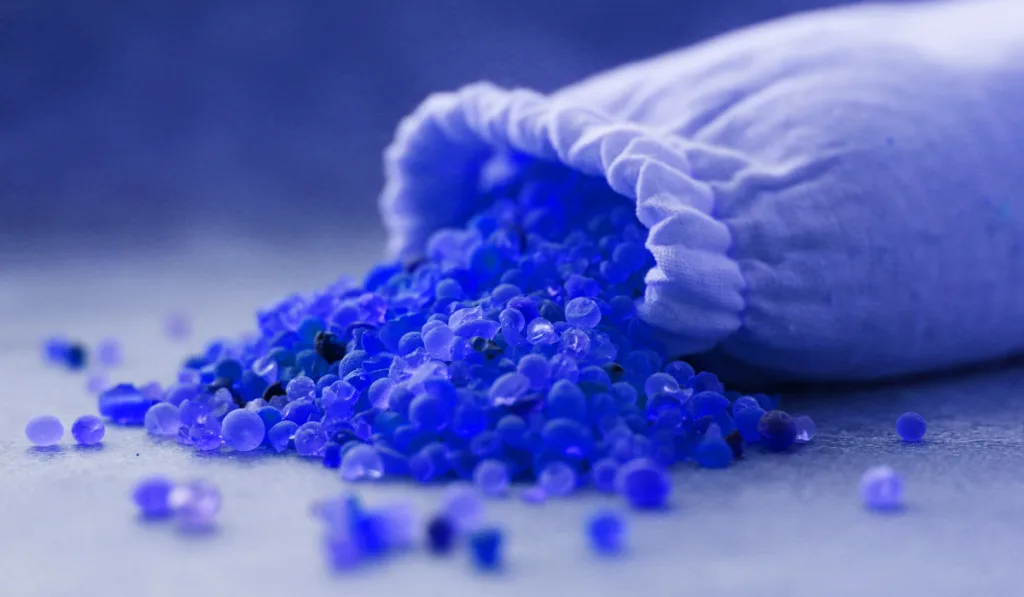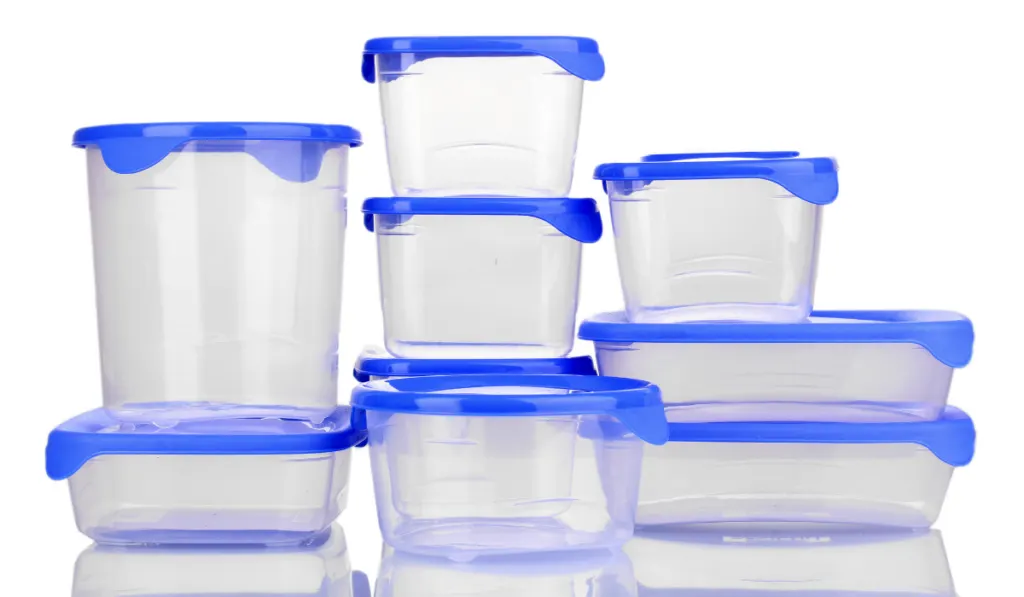Whether it’s your wedding day or somebody else’s, memories from weddings are always the ones we hold dearest, and the bridal bouquet is always at the core of the beautiful memories.
If the wedding occasion is yours, it can be hard to watch the elegant bridal bouquet dry out after the wedding. Luckily, if you wish to preserve your flowers, there are a couple of ways to keep the bridal bouquet dry and fresh for a long time, even years, without losing the beauty and quality.
This article will focus on how you can use silica gel to dry a bridal bouquet.
Before we get to drying the flowers, what is silica gel? Can it dry flowers? How effective is it? Read on for more information on silica gel and how to use it to preserve flowers.

Table of Contents
What is Silica Gel?
Silica gel is a desiccant that absorbs and holds excess moisture from the environment it is in, giving it its preservative characteristic. You may recognize it as that stuff found in small sachets in brand new shoe boxes, purses, or even some foodstuffs.
Through the absorption of moisture, silica gel keeps surfaces dry, effectively preventing moisture and mold on surfaces that could mean spoilage.
To signify their effectiveness, the blue silica gel crystals may turn color to pink, indicating that they are absorbing moisture, and you may soon need to replace the crystals for more efficiency.
Contrary to common perception and popular belief, silica gel is poisonous, and should not be used to preserve or keep foodstuff dry.

Can Silica Gel Dry Flowers?
Silica gel is gaining popularity because of its effectiveness in drying flowers.
Unlike other flower drying methods such as conventional book-pressing, using silica gel is a fast and assured method. Plus, the flowers retain their original form and quality so that you may barely tell it apart from a freshly cut flower.
Preparing Your Wedding Bouquet for Preservation with Silica Gel
Once you have decided to use silica gel to preserve your bridal bouquet, preparation for preservation starts right from the wedding ceremony, where the bride is supposed to take extra care of the bridal bouquet.
If possible, you should have an extra bouquet to toss to the crowd during the bouquet toss, while keeping the main bouquet safe and secure.
Immediately after the wedding, find a vase of clean water for your bouquet to keep it fresh and vibrant. Remember to get rid of any wilting flowers or those that have dried out before placing the stems in water.
If the actual preservation process is going to take some time before you can commence, always replace the stale water in the vase with clean, fresh water to keep the bouquet fresh and in good form.
As you prepare to preserve your bouquet, here are a few supplies you will need for the process;
- Silica gel – This is found in most craft stores in crystal form. It is also affordable.
- Scissors – These are for trimming off the flower stems from the petals before the actual drying process.
- Flower heads/bouquet – These are the flowers to be dried. However, silica gel drying works for basically all the flowers but is best for those flowers with petals that can hold a little pressure, such as roses, zinnias, larkspur, and daisies.
- Large air-tight container – The actual preservation process needs a controlled environment to occur, and no other medium compares to that of a large airtight container. The container should be airtight to avoid letting in any moisture that could jeopardize the preservation process. It should also be large enough not to squash the petals when sealed.
- Gloves and mask – In small quantities, silica is believed to be non-toxic, but if inhaled their small dust particles can be unsafe. You should, therefore, take precautions and have your gloves and mask on before handling silica gel.
- Paintbrush – A thin paintbrush is usually used to wipe off silica gel particles still attached to the petals after the drying process. You can also paint the flowers for an enhanced look.
Among other supplies that you will need are a ribbon, floral wire, floral tape, pins, and floral stakes. These will help you patch the flowers back together after the actual drying and preservation are over.

How to Dry a Wedding Bouquet with Silica Gel
For the actual drying process, below is a step-by-step guide to dry a bouquet with silica gel:
1. Choose, Trim, and Assemble Flowers
First off, you need to dismantle the bouquet, but remember to take and retain a picture so that you can reconstruct the same look.
Once you have the individual flowers, pat them dry, then trim off the stalks to retain only the blooms.
2. Mount Flower Heads on Silica and Fill the Petals with Silica Crystals
Once you have the desired flower heads to preserve, ensure that the air-tight container is clean and dry before pouring silica gel to a certain height, say an inch, to enable the flower heads to sit in the container, then plant the flower heads in the silica crystals.
Once steadily seated in the crystals, fill the flower petals with silica gel crystals, making sure that they are not overcrowded and are entirely buried in the silica crystals.
3. Seal the Container and Store

Seal the air-tight container with its contents and keep it in a cool, dry place, most preferably at room temperature.
The container should remain undisturbed for about a week to enable all the flowers, either with light petals or those that are thick to the core, to get ample time to dry out.
4. Remove the Flowers and Decorate
As soon as all the flowers are fully dry, carefully pull them out of the silica gel and gently shake off the excesses that may still be attached to the flowers. Use a thin paintbrush to wipe out any persistent silica gel particles on the petals.
Once the petals are free of any silica gel, use the floral wire to puncture and wrap the ribbon down a green floral stalk, and use pins to secure the end of the artificial stalk. Repeat this process for all the remaining flowers to give the look of the original stalk of a flower.
5. Reassemble and Display
At this stage, you need to come up with a replica of the original bouquet using the dried bouquet. This is where the bouquet pictures you took at the beginning of the process come in handy.
The floral tape will equally be useful in holding every piece in its place. Once all this is done, find the most appropriate space to showcase your keepsakes.
How Do You Best Display Your Dried Bouquet?
Once dried, displaying your preserved bouquet should not be much of a hassle. First off, always choose a display point that will make your keepsake the focal point. This means spaces like in a glass cabinet are the best to showcase your dried flowers with ample protection from dust.
Alternatively, you can showcase your dried flowers in shadow boxes hung on the wall. Regardless of where you choose to showcase your dried flowers, ensure that they are always not far from sight for the constant beautiful memories that will revitalize love in the air.

Conclusion
Using silica gel to dry flowers is a very effective method to preserve flowers, but is only effective if the flowers are prepared for drying when they are still fresh. The tips in this article will guide you through the silica gel drying process in a systematic manner that is easy to implement.
There are many more methods for preserving bridal bouquets that you can do yourself including dipping flowers in wax, air drying, and painting.
However, if you feel that you are not up to performing this task yourself, professional florists are always available to help you out with flower preservation without involving much cost.
Resources
- https://www.hgtv.com/design/make-and-celebrate/handmade/how-to-dry-your-wedding-bouquet-with-silica
- https://www.fashionair.com/how-to-preserve-a-wedding-bouquet-with-silica-gel/
- https://www.masterclass.com/articles/drying-flowers-with-silica-gel#what-is-silica-gel
- https://ama.ab.ca/articles/how-to-preserve-your-wedding-bouquet
- https://www.agmcontainer.com/blog/how-to/dry-flowers-using-silica-gel/
- https://www.hgtv.com/outdoors/flowers-and-plants/flowers/how-to-preserve-flowers
